How I build a new community from scratch
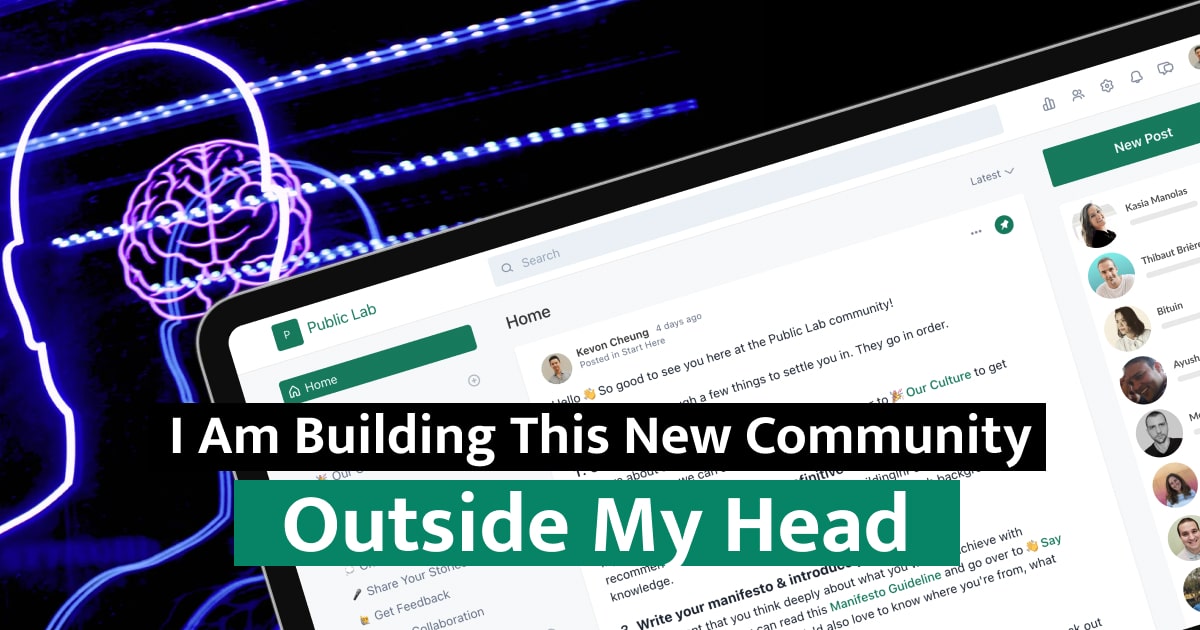
I loved taking out my huge whiteboard and started brainstorming ideas by myself or with my buddies. I thought that one whiteboard would help me change the world.
I kept throwing ideas on the board, hoping to find the perfect solution to the perfect problem.
After doing that for about 8 years now, I finally came to the conclusion that brainstorming and whiteboarding to come up with a business idea is a waste of time and effort.
I was creating inside my own head and was completely detached from the real world.
With the power of Building in Public now, I have learned how to not rely on my brain and get the best ideas to move forward.
The Old Days
I remember it was the Summer of 2012.
I just graduated from Babson College, a school ranked #1 for entrepreneurship. It felt like everyone was making their way into running great businesses, and I had the urge to do the same.
Tech startups were hot at that time, and I thought I'd give it a shot. It would be an amazing learning opportunity anyway.
I brought in my best friend and my sister, and the 3 of us bought a huge whiteboard and gathered at my home almost every day. We were trying to find a problem worth solving.
We put up hypotheses (when we pretended they were real problems instead). We wrote reasons why people needed our solution. We also started making "progress" like registering a company, getting business cards, and putting together a website.
Okay, you know how it ended. It was naive to start a business in our heads.
Today
The "me" today has accumulated enough failed experiences to finally understand how this works. It doesn't mean I can make it work. It just means I know the right approach to take.
But first, I made a few confessions to myself.
I admitted the fact that I'm not smarter than most people in the world. My brain is pretty average.
I also admitted that I'm not a creative person. I hardly get outside of my box.
Because now I'm more self-aware of my own weaknesses, I don't rely on my head or brain as much. If I do that, my rate of failure is very high.
Instead, I am going to rely on other people to tell me what to do. Instead of being the smarty pants, I can be a facilitator to figure my way out.
Is that even possible?
Step-by-step on how I found my way to launching a private community
1) Quickest way to gauge interest
Ever since I rolled out the Building in Public Definitive Guide, a lot of people have reached out to me telling me their interests in a supportive ecosystem. They understood the mindset and how it could help their work, yet resources and a support system weren't there for them.
I didn't know whether this was true or if there were enough people to create a sustainable community.

So I resorted to a tweet thread to help me figure this out.
I spent about an hour crafting up an initial idea and made a graph explaining the offering, both free and paid.
2) Getting initial data
This one tweet led to 19 responses. Not bad for a single tweet.
And I learned more about what people wanted to achieve as they started to build in public.
The form gave me important insights:
100% of people wanted a free buddy system
58% of people wanted a paid group
68% of people wanted a "building in public" course
58% of people wanted a storytelling course
I also concluded a few key points:
Accountability and support are important to people's building in public journey.
58% of people are willing to pay $15/mo for a community. Good %!
Free is always good, but it doesn't make sense for me to do it because A) people's commitment will likely be low for a free service and B) I can see myself abandoning it soon if it doesn't contribute to the bigger picture
3) Reaching out to 19 people
I could have started a paid group at $15/mo at that point, but I chose not to.
The main reason was that I had zero idea how to run such a group. Even if I had gotten people to pay for the 1st month, I wasn't confident they would stay.
My priority at that point was to learn how to facilitate group interactions.
So I created a free Twitter DM group and invited these 19 people to join.
Only 9 of them did. Others didn't respond.
4) Starting a cozy Twitter DM group
Out of the 9 people, only 6 were active.
Yet, we had a super good time helping each other. One day, someone shared their new Building in Public tweet and others gave feedback. The other day, someone pitched their new product idea and got fair comments from other builders.
The dynamic of the group was good. To me, that was the most important thing because with any community or group, it always comes down to people's interactions.
I kept asking questions in the group and seeking insights on what to do next.

I also facilitated the group's interactions a little.

5) Debating with myself
At this point, I was still hesitant to run a full-on community.
A lot of people think running a community is easy. You put together a group of people and they are going to interact with each other.
But my last SaaS startup touched upon virtual communities and the experience told me otherwise.
When you build a SaaS tool, as long as each user is getting the value, you'll do okay.
But when you run a community, you're handling people with different styles and the dynamic is ever-changing.
I'm someone who must do it well when I set my mind to a new project. So for a full-on community, I expected I have to put in a lot of hours to run it. And a big part will be synchronous (live interactions like virtual events).
And with a newborn, I wasn't sure if I could commit to such a project. I struggled to move forward.
6) What changed my mind
Then the next week, a number of things happened.
Thing A
I was chatting with the Twitter DM group members individually and they gave me confirmation that I was helping them in their journey, something even beyond building in public.
I was definitely flattered by their kind words, and I started to believe a community is where I can bring the most value to the people around me after releasing the definitive guide.
Thing B
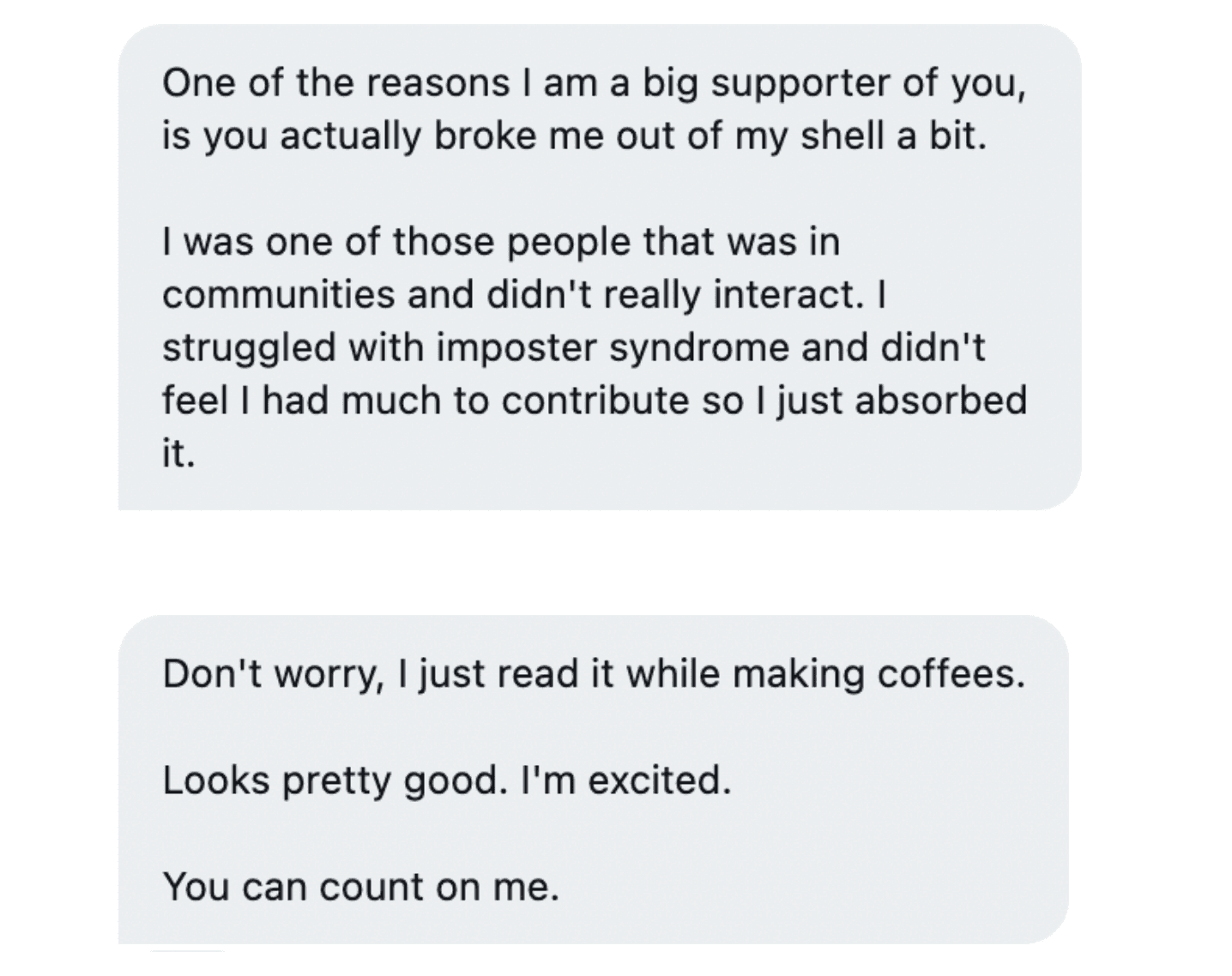
I studied more about virtual communities. There is Circle which is a forum style, and there is Slack which is a live messaging style.
Personally, I stopped getting on Slack because the number of messages in different communities was getting out of control. I was super overwhelmed.
Many Slack communities became places for people to dump their links and content. I didn't enjoy it.
But for Circle, it seems to be asynchronous. Members can take their time to engage and they can also take a step back if they want to.
I also learned that as a community builder, if I can set up a good foundation and a regular rhythm to facilitate, it doesn't require my "live attention" as I previously thought. A lot of it can be asynchronous!
Thing C
Just for fun, I set up a gathering for indie builders to meet 1:1. The event went super well and people loved it. They also shared that they loved the way I ran it.
This gave me another confidence boost about my facilitation ability.
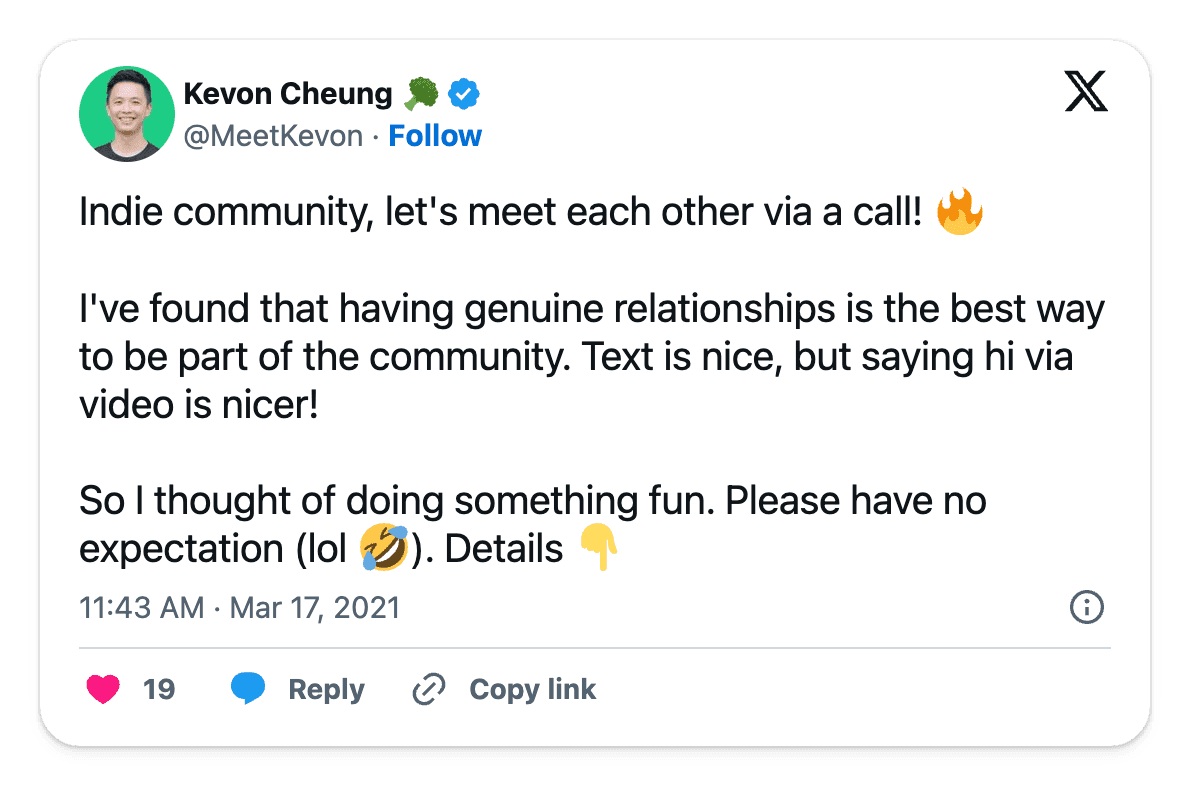
With these 3 events over that week, I decided to give it a shot to expand the small group into a larger community for Building in Public.
And I had to get to work: setting up Circle, figuring out membership & payment, building a website, etc. Lots of work!
7) Finding the early members
There was a lot of groundwork I needed to get done, but I knew finding more active, engaging early members was my top priority.
After all, I only had 6 people.
Of course, I wrote a tweet to find them.

The early culture of a community is crucial. I wanted to find people I might have already interacted with on Twitter who are supportive givers. They must enjoy interacting and helping one another.
I kept a list of all the people who were interested and split them into batches so I could invite them later.
8) Finally, the community was up!
After about a week of intense groundwork, the Public Lab community was finally set up.
There was just one problem - it was a bare shell and didn't look like a community.
I made sure to thank my early builders to be patient with me as I continued to work on setting up the foundation and facilitating the group to get started.
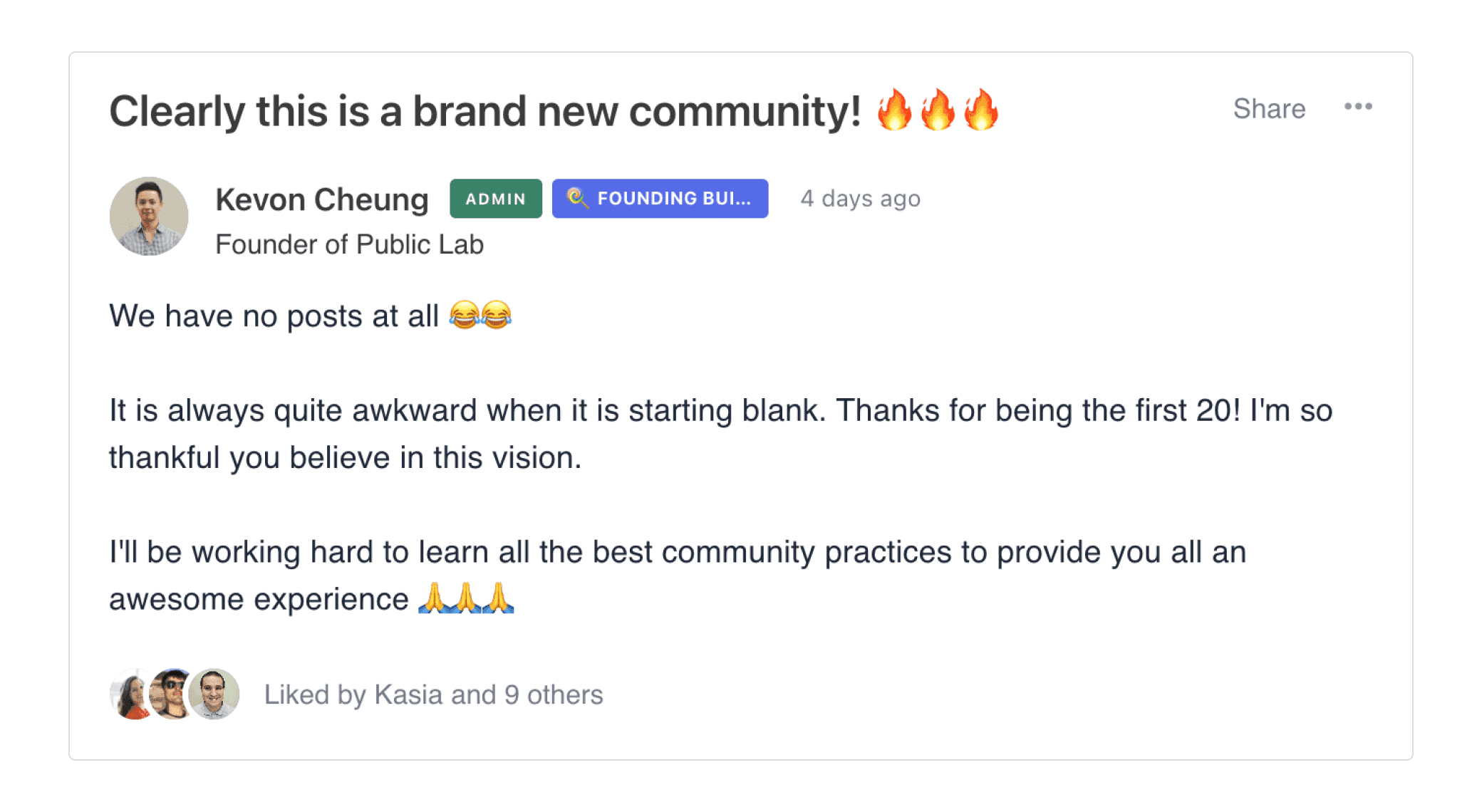
Carrying forward the spirit of Building in Public, I also decided to build this community in public.
On one hand, I want to share my learnings building a community as a newbie with everyone via blog posts like this. On another hand, I want to open up the community's roadmap each month to let all the members know what I'm working on and get them involved.
I can only see the upside of being transparent about this whole process if we want to create a strong-cultured community.
After all, it is not as important what I think the community members need as what they actually need.
My takeaways from this process
1) People know best what they need
I need to get outside my head because I know nothing. The best way to create something valuable is to observe and listen to the people around me.
2) Keep communicating
I have no idea what the next step is. Instead of getting lost, I focus on figuring out how to get hints to do the next thing. It could be a public tweet or private DMs. This is also the beauty of building in public, when you're open to comments and feedback, people have so much to share.
3) Be a learner
The closest I've gotten to running an online community was running a forum with 10,000+ members when I was 15. But, it was a different experience.
Back then, the forum was for a local singer so the focal point was very clear - her!
Now, Public Lab was built on top of a mindset. The backbone of this community is education and learning. And I need to make sure it is bringing value to every member constantly.
I shared this fact with the 20 early builders on the Public Lab community so they can have the right expectation and involvement to do this together.
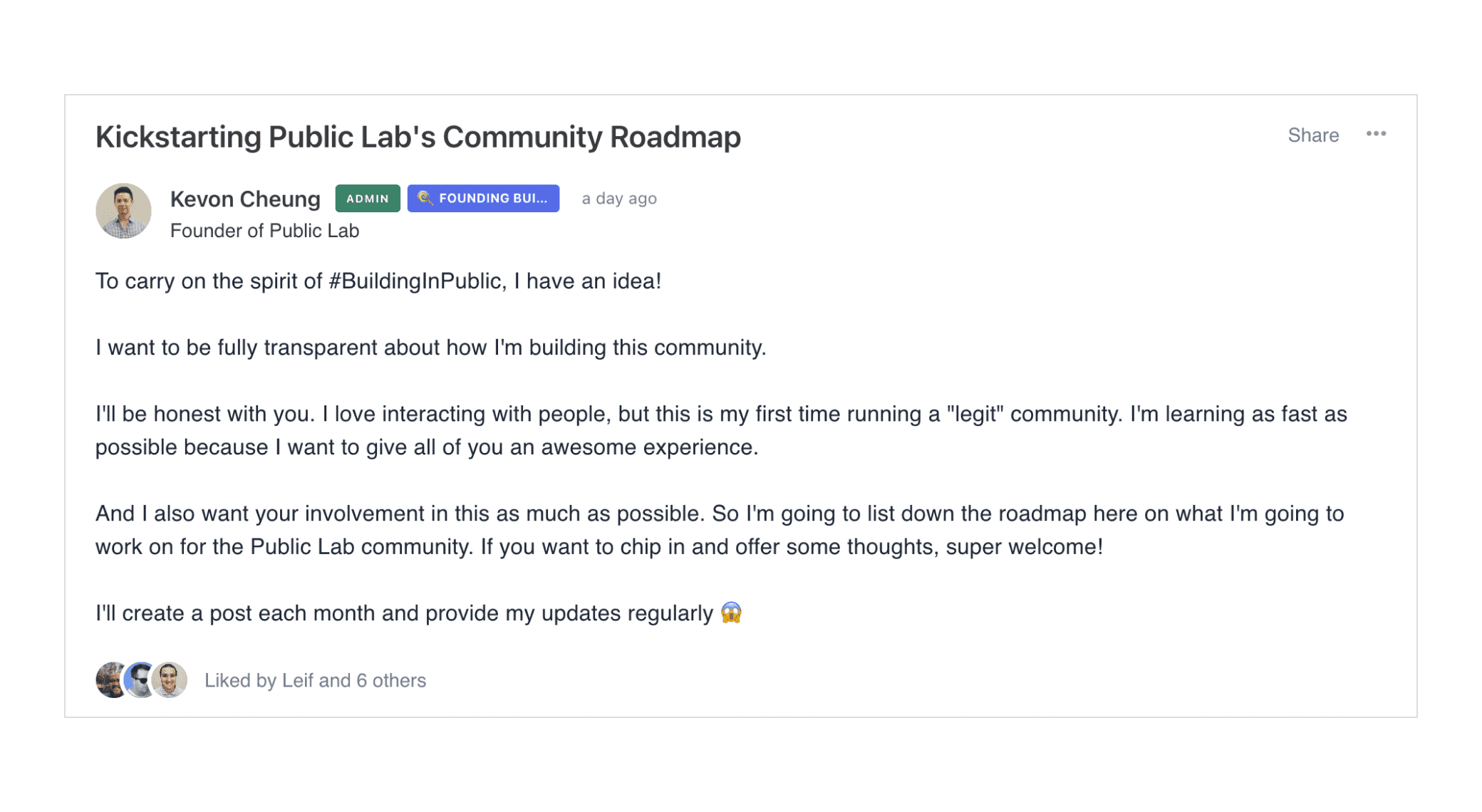
4) Take baby steps
I cannot stress enough the importance of taking slow baby steps. Whenever I moved fast in my previous startups, I made all the wrong decisions. When I launched the Building in Public Definitive Guide or the email course, Making Twitter Friends, I also took baby steps to roll it out.
This is why I'm in no rush to open the Public Lab community up to everyone. My plan is to bring in batches of 20 people at a time so that we're creating a sustainable community. If you're interested to get on the waitlist, check out the Public Lab's website! See you there.